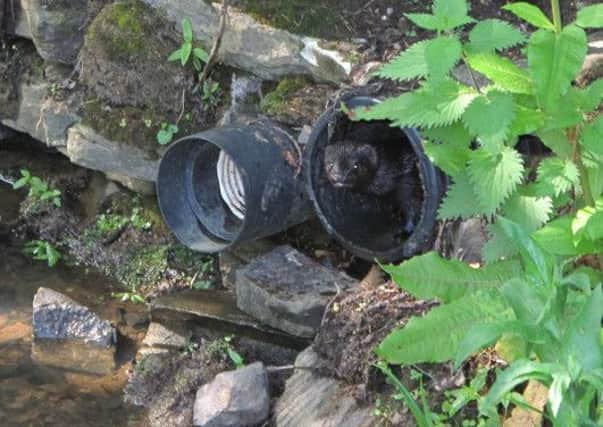Mink menace takes toll on wildlife at St Andrews park


It is suspected the number of American mink is on the rise at the St Andrews park following increasing sightings over recent weeks, with the marauding menaces showing little indication of being timid in the presence of humans.
And the Friends of Craigtoun reckon why there do not appear to be any remaining ducklings at the park.
Advertisement
Hide AdAdvertisement
Hide AdHowever, it is part of a UK-wide problem with American mink.
Locally, it is also believed the presence of mink down by the Eden estuary is doing considerable harm, particularly to the kingfisher and duck populations.
“We do know that mink can devastate the local wildlife and we will make moves to get rid of them,” said Kyff Roberts, of the Friends of Craigtoun.
“We have been having more sightings of mink in recent weeks and we don’t think it’s just one, so possibly they are breeding.”
Advertisement
Hide AdAdvertisement
Hide AdHe said the mink did not seem timid at having humans around and were quite bold in staring back when they were spotted.
Fife Council’s biodiversity co-ordinator, Johanna Willi, said the last concerted efforts to control mink in Fife had been during a three-year East Fife Water Voles project, which finished in 2009.
It received more than £48,000 in funding from Fife Environment Trust, Scottish Natural Heritage, Scottish Environment Protection Agency and Fife Council Quality of Life, as well as in-kind volunteer contributions.
Water voles are an endangered species and are at particular risk from mink.
Advertisement
Hide AdAdvertisement
Hide Ad“Unfortunately it’s impossible to eradicate them and within a short time of the Water Voles project finishing, numbers of mink were anecdotally reported to be booming again,” Johanna said.
She said there was no more funding for a co-ordinated approach to keeping the mink population in check .
Landowners were encouraged to implement their own control measures which would contribute to helping protect native mammal species.
Mink can have a widespread impact, targeting water voles, ground-nesting birds, chicks, and fish.
Advertisement
Hide AdAdvertisement
Hide AdThe first American mink were brought to British fur farms in 1929 and all wild mink in Britain today are descendants of mink which escaped on their own, were released by animal activists or released by the fur farms when they were shut down (fur farming was banned in 2000).
To help collate data about the species, sights of mink can be reported online at www.inns.rafts.org.uk or by emailing [email protected].